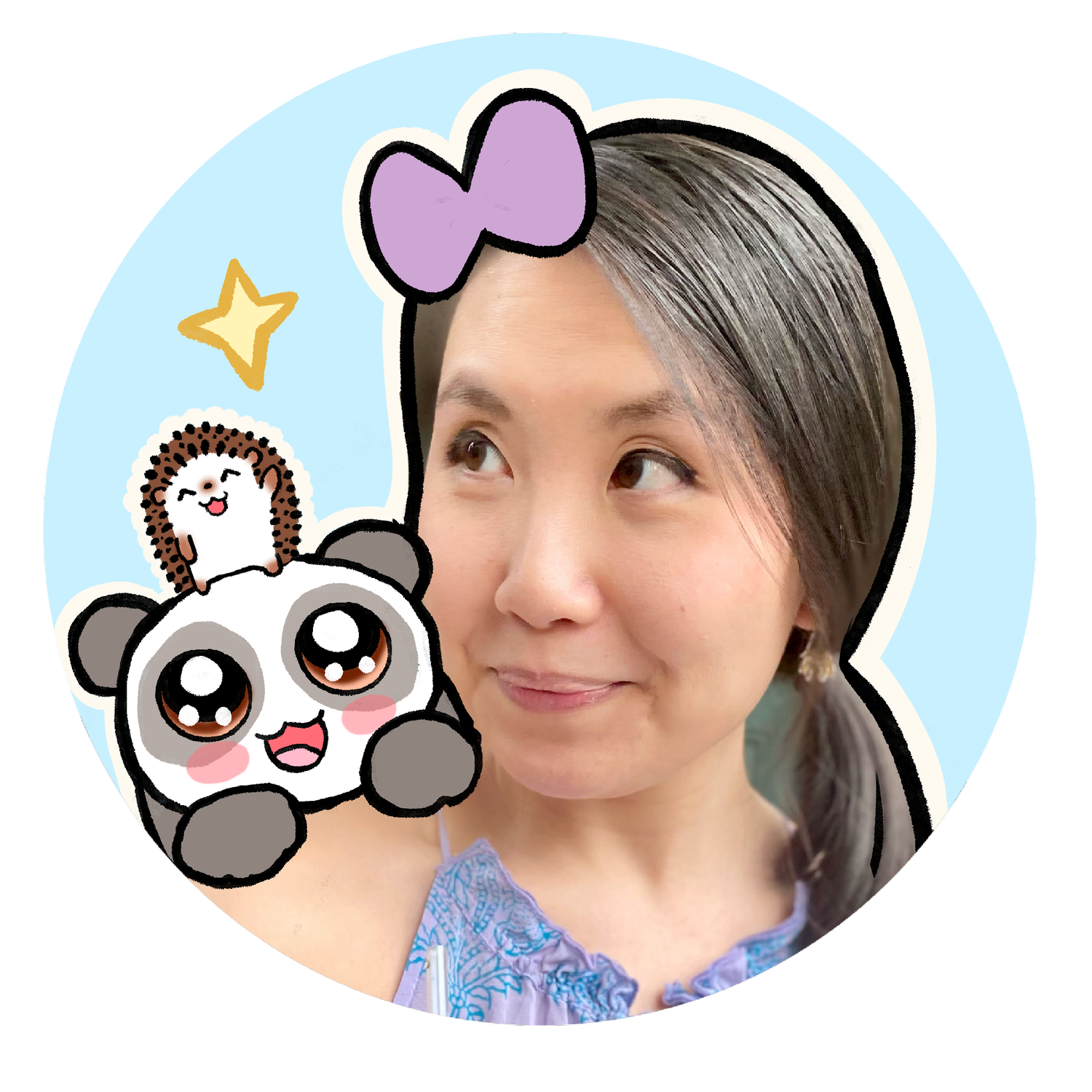Who Makes Panda Cub Stories?
Answer:
Linda (me), the stories that shaped me, and the children who have helped (and taught!) me to see, to laugh, and to make.
Hi there!
(actual photo^__^)
My name is Linda! I am a Chinese American who grew up in the bible belt of the south, and the Chinese tales of my childhood grounded me to my culture. I grew up fairly bilingual (Mandarin/Sichuanese + English) and had strong speaking and listening comprehension (I LOVED listening to Chinese audiobooks as a kid). However, I struggled a lot with writing and reading in Chinese and only began to become proficient in college. I always felt like there was a giant disconnect between the language I loved (listening to stories) and the process of trying to learn Chinese (weekend Chinese school and rote memorization). I believe that good stories ignite a love for learning -- of language and culture. As an artist and educator, my vision is to create art and stories to promote Chinese language learning in children of all ages!
Multiple Authors in Children’s Literature
In the fall of 2018, I completed my MPhil (Masters) in Education at the University of Cambridge, where I focused on Critical Approaches to Children’s Literature. My MPhil experience has challenged me to reconsider my own role as an individual maker, and to begin to invite (and recognize) the role of children as active creators of their own literature. This shift in perspective (and subsequent shift in practice) happened throughout the course of an (ongoing) project of intergenerational co-authorship.
Intergenerational Co-authorship: A beginning
* the following is adapted from my MPhil Thesis
In January of 2018, I’d begun making a series of watercolor paintings of commonly used Chinese characters: indulging an artistic interest in Chinese etymology whilst hoping to create an artistic Ebook for others (namely adults) who also appreciate the Chinese language.
example character paintings
Several months prior to beginning my MPhil thesis work, I had been working with K (the 9-year old son of a family friend), on a small-scale reader-response project. Toward the end of one session, K was helping me pack up, and had flipped through some in-progress character paintings in my sketchbook. I noticed him looking intently at several characters I had painted:
K was tracing the paintings with an index finger, and murmuring. Leaning closer, I realized that he was hunting for a translation that he recognized within the character itself. “I found it!” he said triumphantly at one point, pointing to the painting of “十” … and then to the “ten” and “dix” (English and French translations of “十”) that were hidden in the character:
The time and interest K showed these in progress paintings sparked an initial thought: perhaps these paintings would be interesting and useful for children as well. It was with this thought that the renewed designidea for this book as an “educational children’s text” was born.
Over the course of the thesis, K and I collaborated to begin to re-design, re-make, and re-strategize this text into an intergenerational picturebook. Not only did K change the intended audience of our text from “just adults” to “children as well”, he also made novel contributions to the text. On such example was our co-development of a “rainbow stroke-order guide”:
To better explore this contribution of K’s, a brief explanation of “stroke-orders” is in order. Chinese characters are created through a combination of lines and dashes, and are to be written in a particular way (top > down, left > right, horizontal > vertical etc.). While hard to remember, following stroke-orders often helps new learners of Chinese improve their handwriting, and lends the writing of Chinese characters a certain rhythm and cadence. The rainbow stroke-order idea was developed as K and I worked alongside each other to illustrate our title page:
Importantly, the rainbow-stroke order guide was a significant and new contribution to the text, that began first as a designinitiated by K. Both K and I participated in the negotiationof the idea and – having arrived at a mutually agreed upon conclusion – K completed productionof the design prototype. The interactions between child and adult co-author in this example also further illuminate the “sliding scale” of adult and child agency. Rather than a flat relationship in which a child gains power while the adult loses it, K and I were engaged in a process which Nick Sousanis calls “unflattening” – a process in which multiple vantage points are engaged to engender “new ways of seeing” (2015, p. 32).
Intergenerational Co-authorship: What is Fair?
My experiences working with K taught me something important: that children can make meaningful contributions to the creation of a children’s text when invited into the process of authorship. It also reminded me, that it’s easy to cut children out of the final step of authorship: recognition and compensation for their work. At age 9, K was clearly aware of the financial possibilities of our joint work, as well as the potential unfairness of being excluded from the process (and benefits) of publication:
I responded to K’s concerns – which were also my concerns – as truthfully as I could:
K nodded his agreement:
Next Steps
In the months since my thesis, I’ve been thinking much about this experience of intergenerational co-authorship with K. The 100 character paintings have been completed:
K and I will be continuing our efforts to re-author this book into an intergenerational picture book. The experiences of my CACL MPhil, however, will last beyond this single project. Co-authoring and co-learning alongside the children I teach: this is what I hope to do going forward!
Works Cited:
Rose, J. (1993). The Case of Peter Pan, Or the Impossibility of Children’s Literature. Philadelphia: University of Pennsylvania Press. (Original work published in 1984).
Sousanis, N. (2015). Unflattening. Cambridge, M.A.: Harvard University Press.
p.s.
I’ve provided screenshots of the abstract and introduction to my Thesis below. If you’d like to request the full document, please email me!


















